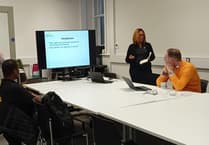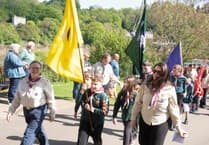Abergavenny Friends of the Earth have offered more ways in which you can help the planet.
In recent months, the town of Abergavenny have strived to become a more biodiverse town. A spokesperson from Abergavenny Friends of the Earth stressed on the importance of this venture, saying: "There have been massive losses to our biodiversity.
From elephants to ants, panthers to sparrows, we have seen drastic reductions in the amount of wildlife on our planet. This is a crisis for them and us. The 2019 Nature Report revealed that overall, populations of the UK’s most valuable wildlife have plummeted by 60% since 1970 , and 69% worldwide."
However, the group believe this to be an avoidable crisis. "You may ask what accounts for the remaining 86% of mammal biomass. Well, 36% is human beings and 60% are domestic animals. Nature is being crowded out until it can no longer survive. We need to make room."
Following this, they have offered a list of ways in which you can help 'your patch of earth'.
Your patch of earth is any outdoor space nearby. This may be a garden, a green strip in the street, a roundabout, a park or a community garden. Even a windowbox can help.
Using your patch of earth means to stop killing things and start caring for things, above ground and underground.
• Stop using any chemicals. “Pests” and “weeds” are part of the ecosystem and if you allow time and space you will find that predators will move in to take care of them. You may get a few nibbled leaves or a few daisies in your lawn but does that matter? Our gardens aren't oil paintings to be observed in a gallery, they are a place to be experienced. I love the fact my garden in town is alive with birds, bats, butterflies, hedgehogs and dragonflies.
• Next you can create areas in the garden where wildlife can feel safe and make a home. A hedge is an excellent example. A mixed native hedge will be full of insects and caterpillars which will feed birds, berries for the winter and nesting sites in the spring. They are also a hiding place to get away from the cat or hawk. Install a few nesting boxes as well in high spots, away from cats.
• Smaller creatures need habitats too, and nothing is simpler than leaving a messy corner. Sweep your leaves into a corner or create a log pile. The insects will love it. Include rotten wood which is home to many insects and grubs.
• Plastic grass is dreadful for the life living in the soil. It excludes light and air and suffocates everything underneath it. If you don't want to cut your lawn then try a wildflower mini meadow instead. Plastic grass isn't carefree anyway, it needs hoovering!
• A pond or bird bath, of any size, is a welcome place for birds to drink and have a splash, and small mammals too (but make sure they can climb out if the accidentally fall in by adding a shallow end.) A larger pond will be populated by dragonflies, frogs and newts. Don't add fish if you want wildlife.
• Hedgehogs are a favourite visitor but sadly they are on the IUCN Red List of endangered species for the UK. It's easy to see why people love them, they are cute, easy to see if you go out after dark, and they eat slugs too (so don't use slug pellets). They need a large habitat to thrive, at least 50 gardens, all of which need to be accessible via gaps in fences or under gates so try to keep these hedgehog highways open. If you want to try feeding hedgehogs then the Wildlife trust recommends plain kitten biscuits or meat-based wet dog or cat food. Personally I'd rather they ate my slugs!
• If you are a gardener then I would urge you to not use any peat products in the garden. Peat is a valuable resource as a habitat and in drawing carbon out of the air, holding more carbon than forests! The peat free alternatives are much better than they used to be so there's no need to use peat. Abergavenny garden centre grows all their plants peat free, showing us how successful it is.
• Growing your own food is also something you can try. Think of the carbon saved from transporting a tomato from a farm compared to carrying it in from your garden! The taste and nutritional value is much better too. If you don't have space then join a community garden or maybe help a friend.
• I love compost, seriously, it's incredible stuff. You can save money compared with buying compost, and suddenly waste becomes a resource! A plastic darlek-style bin can be bought cheaply and if you mix kitchen scraps, weeds and torn cardboard you will have compost in a year or two. It's tricky to get the balance right, you need fresh material (called the greens) dried material (called the browns), some water and plenty of air. If your compost smells bad then it hasn't got enough air so emptying the bin and then putting it back again a few times in the year is a good idea. The more often you turn it the quicker you'll get compost. Avoid cooked material so that you don't attract rats.
• Plants are obviously important. Every garden should have at least one tree, if you only have room for one why not make it a fruit tree? Flowers should be “good for pollinators” which will be indicated this on the label when you buy them. Try to make sure there is something in flower all year round, from heather in winter to lavender in summer. A good tip is to visit your garden centre on a sunny day once a month for a year. If you see a plant is covered in bees, buy it & plant it!
If every garden in Abergavenny followed this plan we could see amazing results, I hope you will give it a go.





Comments
This article has no comments yet. Be the first to leave a comment.